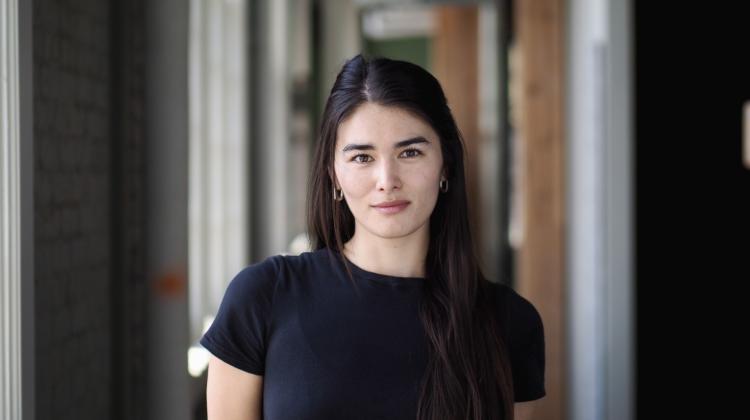Jane Fessenden

Course 4 helped me build my portfolio, think about aesthetics more, and improve my presentation and communication skills. It also taught me how to push through the night to get things done.
What is your career story? How did you get where you are today?
I graduated from MIT in 2018 with a degree in Course 2 (Mechanical Engineering), a minor in Course 4 (Architecture), and a concentration in art. If I had known about it earlier, I would have done 4B, but the design minor was only offered in my senior year. My minor was focused on product design, which only a few people in my year pursued.
After my freshman year, I interned at an exoskeleton startup, focusing on mechanical engineering design. I did a similar thing after my sophomore year and then participated in the MISTI program, doing bio-mechanical research. During my junior summer, I interned at Apple in product design, which led to a full-time position after I graduated. I spent 4.5 years at Apple working on sensor design, which was more EE and technical design than what I had done during my internship. It involved a lot of execution and R&D, and it was rewarding to see our work in the wild.
Beyond Course 4, I was involved in marketing and design extracurriculars, including being the head of marketing for Alpha Phi. About 1.5 years ago, I left Apple because I was bored and wanted something more creative and earlier in the design process. I now work at Smart Design, a design firm in New York, where I focus on user research and consumer hardware. I find it really interesting because it's less about being locked into a project and more about the early stages of design.
Initially, I didn't know what I wanted to do. I thought about being an architect and took some classes at UC Berkeley, but I was advised against it. I loved STEM and making things but wasn't interested in healthcare or bio. The toy design class at MIT made me fall in love with the design process. In engineering, you're helping people, and it's amazing to bring something that solves a problem to life. Hardware allows for more interaction, and the design process is creative and challenging.
I considered doing 2A-4 but ultimately stuck with straight 2. The studio classes in Course 4 made me better at fabricating things. I took 2.009 but hated my project, which was disappointing. However, the overall experience was very valuable.
What were the biggest skills/mindsets/approaches you took away from your design education?
In Course 2, I learned the fundamentals of physics, proper machine etiquette, and more structured design processes. My favorite class was precision machine design, where I put my engineering skills to the test by building a lathe. It taught me how to develop a project from a technical standpoint.
In Course 4, almost all my classes were studio-based, leaning towards industrial design. I focused on the emotional aspect of design, rapid prototyping, and thinking about problems from an interaction standpoint. For example, I made a table and considered the touch points people would emphasize. Course 4 also taught me about aesthetics, CMF (color, material, finish), and how to choose materials from both an emotional and functional standpoint. It was more creative and artsy, which complemented the technical skills I learned in Course 2.
The combination of these courses helped me understand how to speak to people outside my discipline and preserve the integrity of design while maintaining features. At Apple, I mainly used my Course 2 brain, but Course 4 helped me build my portfolio, think about aesthetics more, and improve my presentation and communication skills. It also taught me how to push through the night to get things done.
What do you wish you had learned in your design education?
I wish MIT had an industrial design program. It feels like it's up MIT's alley, as industrial design is more applied but still theoretical. Industrial design is an application of 4B, and if it were geared more towards product design, it would be incredibly valuable. Most people either choose engineering or design, but I think there should be more integration. I needed more training in areas like ergonomics, user testing, and the history of design. I also want to see more sustainability incorporated into MIT's curriculum.
What advice do you have for students starting out in design?
Portfolio! Course 2 doesn't really emphasize it because most people don't go into creative fields. In design engineering, being able to flex both sides is very rare. The best students have amazing technical backgrounds but also show interest in design. For example, some MIT undergrads go on to do a Master's in product design at Stanford. Knowing how to prototype and how things come together is crucial. Classes like 2.009 set people's portfolios apart and teach you to work in a team. Imperial College in London and Tufts have good programs for Product Design as well.


